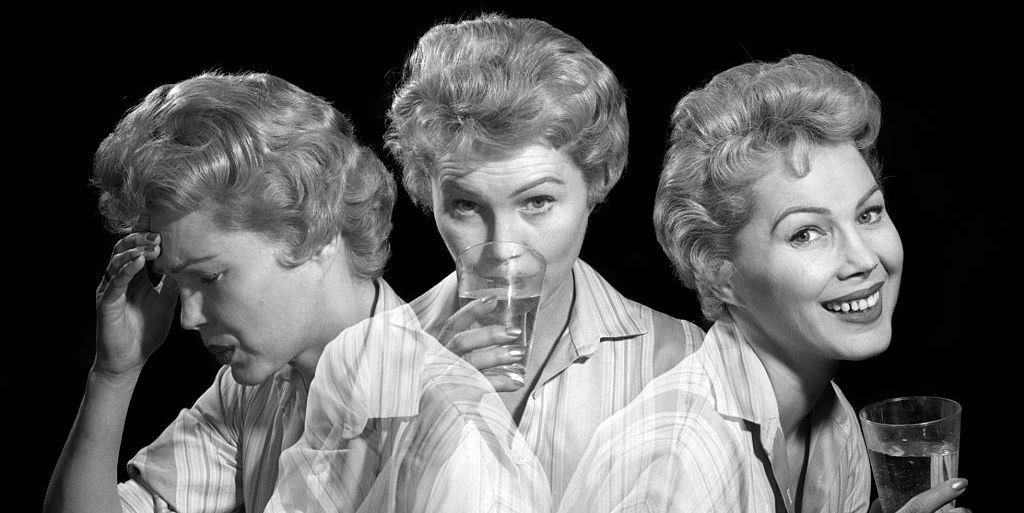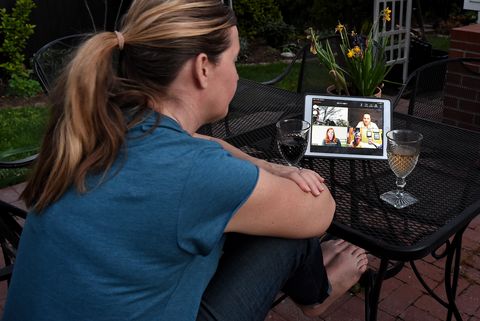For Melissa, a 29 year old resident of Tampa, happy hours look much different now: They’re more frequent, start earlier, and she’s often alone. While she rarely drank at home without company before the coronavirus pandemic, now she reasons that “desperate times call for desperate measures.”
And in that sense, Melissa is far from alone.
Americans in quarantine are buying literal tons of alcohol: Data from Nielsen showed online sales of alcohol jumped 378 percent the week of April 11 over the same week last year. (Alcohol delivery company Drizly reported its year-over-year customers grew by a whopping 1,600 percent by the end of March.) For the week of March 11, all sales of alcoholic beverages rose 55 percent over the same period last year, according to Nielsen. And we’re not just purchasing more: we’re stocking up and buying booze in bulk. (Of course, those numbers don’t tell the whole story. Restaurants and bars are closed—although some are delivering alcohol or offering to-go service—so our buying habits have shifted to other venues.)
Elizabeth, a 29-year-old San Francisco resident, estimates she and her fiancé now spend about $100 a week on alcohol. On a recent haul, they brought back five cases of beer, a bottle of Jägermeister, and a bottle of bourbon—the latter of which the pair used to make hot toddies and mint juleps, in part, Elizabeth says, to make up for the date nights out they’re missing because of the pandemic.
And while spending serious money on cocktails with the girls or sharing bottles of wine in a low-lit restaurant might not have raised any eyebrows before isolation, the communal aspect of social drinking is temporarily gone. We have more time and space to scrutinize our behavior, and drinking at home—and, often, drinking alone—triggers our sense of social stigma. After all, we’ve been taught, drinking even to excess is a social activity, while imbibing alone is often considered cause for alarm.
Maria, a 26 year old living in Denver, relished evenings out on the town with friends. “There are so many more happy feelings associated with going out with friends and bar hopping,” she says. “Having a glass of wine and watching a movie at home for the 12th straight night isn’t the same.”
Drinking itself has lost its fun, too. “There’s an automatic feel to it,” Maria admits. “It’s almost built into the routine into this point. It feels like it’s something we’re all doing because it’s a distraction—a very temporary distraction from everything we’re all dealing with every day.”
People are still finding ways to drink socially, but at a healthy distance. Bars are hosting online happy hours, while Zoom meetings with friends and coworkers might not feel complete without a cocktail in hand. (Elizabeth has a standing, Pina colada-heavy Zoom happy hour with friends every Wednesday, and Jennifer, a 34-year-old resident of Cleveland, made a rule that she’d limit her drinking to when she can meet her friends digitally on Google Hangouts.) Neighbors toast to one another from the safety of their respective porches or fire escapes; and virtual wine tastings have cropped up from Napa Valley to Miami. In each of these scenarios, people may technically be drinking alone—but they’re drinking alone together.
But our own sensibilities hint at a darker side to drinking in isolation. Late night host Conan O’Brien recently tweeted, “Can we all agree to temporarily raise the bar for what’s considered an ‘alcoholic?’” a joke that grasps at an uncomfortable truth: Some of us are drinking not only alone but more heavily, in ways that may be unhealthy.
Elizabeth admits she nips at a glass of whiskey before, and sometimes after, going to the grocery store. It takes the edge off the stressful excursion, she says, but isn’t something she’d consider doing outside the confines of coronavirus. Maria took a glass of wine—concealed in a to-go Yeti cup—on a walk with her dog. It was early evening, and she’d already been drinking. Taking the wine with her “was a fun adventure,” she says, “because there’s no other excitement right now.”
While Christina, a 36-year-old resident of Charlotte, N.C., estimates she’s drinking no more now than prior to the pandemic, being confronted by the volume she’s had to drink—in the form of the empty wine bottles she’s throwing out at the end of the week—has caused her to reevaluate how much she wants to drink now and moving forward. At a bar or restaurant, “you don’t see the evidence piling up,” she explains.
In a recent survey of 3,000 Americans by Alcohol.org, an online resource from addiction treatment service provider American Addiction Centers, more than one-third of respondents admit they’re likely to drink more than usual in isolation. (One-fifth also reported stockpiling alcohol.) The survey didn’t provide any insight into why we’re drinking more, But Dr. William Kerr, PhD, a senior scientist with the Alcohol Research Group, told ELLE.com some people may be drinking to cope with the immense emotional and economic stress of the pandemic—which has cost many people their jobs, support systems, and even loved ones’ lives.
Being temporarily cut off from healthier coping mechanisms—such as going to the gym or getting a hug from your mom—may also drive people to drink, says Lisa Fucito, PhD, associate professor of psychiatry at the Yale School of Medicine. She says drinking at home alone isn’t inherently risky, so long as it’s moderate. (The Centers for Disease Control and Prevention define moderate drinking as up to one drink per day for women, and two drinks for men.) “Many people drank in this manner before the pandemic,” she points out. It’s stepping out of that moderate category that can be cause for concern, Fucito and Kerr agree.
Research has also shown that crises tend to lead to more widespread alcohol use and abuse. After the 2003 SARS outbreak, a study found hospital employees in Beijing, China, had a greater likelihood of alcohol abuse or dependence three years later, which was associated with quarantine or their work in high-risk settings. Another study found high rates of binge drinking years later among Manhattan residents, first responders, and others who were near the terrorist attacks on September 11. That correlation holds also for Hurricane Katrina, where research shows survivors experienced alcohol consumption-related problems at substantially higher rates.
The good news, according to Fucito, is that “the majority of people who increased their drinking during the pandemic should be able to transition back to lower levels of drinking when communities open back up,” much like people resume normal drinking habits after the holidays or a vacation.
Others will have to work harder to keep their drinking at a safe level, now and in the future.
“Drinking at home doesn’t come with some of the restrictions imposed by drinking at a bar or restaurant,” Fucito says. “The bar or restaurant doesn’t close. People don’t have to worry about getting home safely.” They’ll also have to reckon with why they’re drinking. “We know that negative motives—drinking to cope with unpleasant feelings or to conform with others—are associated with greater alcohol-related harm and risk of developing a … problem,” she says.
Isolation is also uniquely challenging for people in recovery. While support group meetings like Alcoholics Anonymous have moved online, the quarantine has made it much more difficult for addicts to access the services they need, and there are reports that waitlists for recovery programs are ballooning.
But for now, many people are willing to give themselves a pass on things they might not otherwise do given the extraordinary times we’re living through. “I’m drinking more now because there’s only so much work, reading, Netflix, and exercise I can do in one day,” Melissa says. After all, we’re all doing the best we can.


